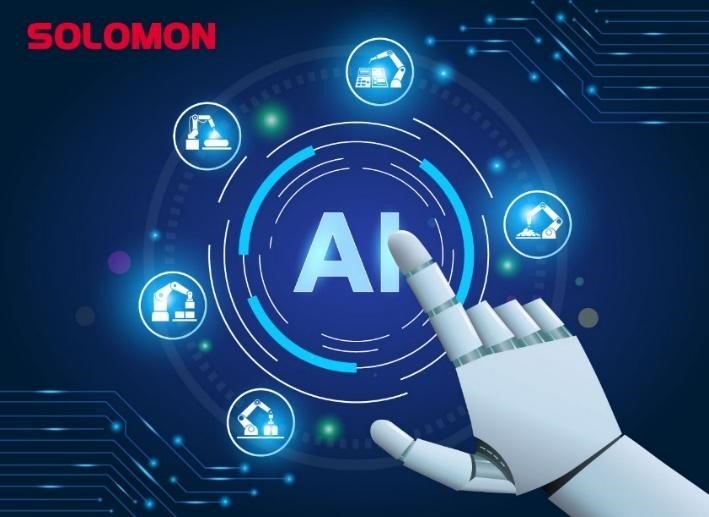Taiwan’s Pioneering Deployment of NVIDIA Jetson Thor Accelerates Semantic-Driven Humanoid Robot Simulation
[Taipei – August 20, 2025] – Solomon integrated NVIDIA Jetson Thor with NVIDIA open Vision-Language-Action (VLA) model Isaac GR00T N1.5 and NVIDIA Isaac Sim, an open-source, reference robotics simulation framework, successfully developing a semantic-driven humanoid robot simulation system powered by natural language.
At Automation Taipei 2025, Solomon debuted its semantic-driven humanoid robot simulation system powered by natural language. Built with NVIDIA Jetson Thor, NVIDIA’s Vision-Language-Action (VLA) model GR00T N1.5 and NVIDIA Isaac Sim, users can simply input natural language commands—such as “Pick up the red can”—to instantly prompt a humanoid robot in a virtual environment to interpret the command, identify the correct object, and simulate the corresponding action. This significantly simplifies the training workflow and accelerates the transition from simulation to real-world deployment.
Additionally, Solomon is demonstrating its wearable sensor-based imitation learning system, which trains humanoid robots through motion capture. This approach has proven to be more effective and efficient than traditional training methods using Mixed Reality (MR) smart glasses.
Wheeled Dual-Arm Robot and Super Vision System Lead the Way in Smart Manufacturing
At the exhibition, Solomon will also unveil its next-generation wheeled dual-arm robot, which integrates NVIDIA cuMotion, a CUDA-accelerated library for motion planning, with Vision-Language Model (VLM) technology to demonstrate agile mobility, coordinated dual-arm manipulation, and autonomous decision-making. This robot is equipped with Solomon’s proprietary Super Vision system, enabling long-range recognition of small objects and fine details. It is ideally suited for high-precision applications such as defect inspection, environmental monitoring, object counting, and equipment oversight, positioning it as an ideal assistant for smart manufacturing and on-site automation. The Super Vision system is already being deployed in the North American market, where it is used in combination with humanoid robots.
Expanding Product Lines to Accelerate the Real-World Deployment of AI Vision Technologies
In addition to its leading advancements in robotics, Solomon continues to push the boundaries of application across its other core product lines. Its AI-based defect detection software has been widely deployed by hundreds of customers both in Taiwan and overseas, spanning industries such as semiconductors, display panels, AI servers, and medical devices—and even extending into more traditional sectors like automotive and food processing.
These diverse use cases serve as a strong testament to Solomon’s AI technology leadership. The software requires only a small number of samples to build stable and reliable AI models, while integrating traditional AOI (Automated Optical Inspection) measurement capabilities with advanced visual analytics tools to deliver a more comprehensive and precise inspection solution.
At the same time, Solomon’s wearable and mobile solutions that combine AI and AR technologies are rapidly expanding. These solutions support deployment across various devices—including AR glasses, smartphones, and IP cameras—with applications spanning manufacturing, retail, food service, warehousing, and even financial institutions.
Just as Solomon has established strong advantages in robot vision and defect detection, its AI + AR solutions are chosen by customers for their ability to rapidly build models on diverse devices without the need for massive data collection. These solutions can be flexibly deployed on-site, empowering frontline workers to significantly improve operational efficiency and accuracy.
Ushering in a New Era of Semantically-Driven Automation
The seamless integration of NVIDIA Jetson Thor and the NVIDIA Isaac platform marks a new stage in the evolution of robotics—from passive task executors to intelligent agents equipped with language-vision understanding and autonomous decision-making capabilities.
Solomon’s global debut at Automation Taipei 2025 not only showcases the company’s leading position in AI and robotics integration, but also signals a broader industry shift: the growing deployment of humanoid robots across manufacturing and service sectors within the next two to three years.
